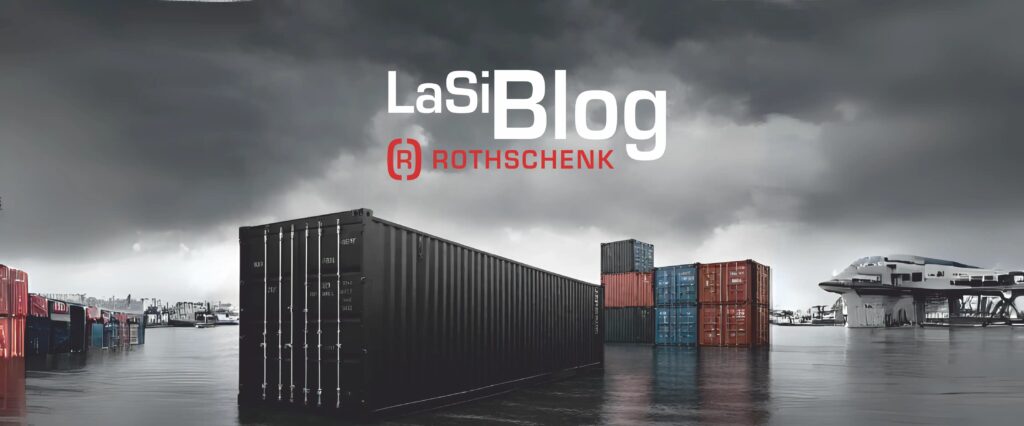Facts for professionals
Half-knowledge is dangerous. Especially when it comes to shipping cargo weighing tons.
In our expert articles, you'll get seriously researched facts from instructors and certified instructors.
Decades of experience guarantee reliable statements and practicable application in practice.
Cargo-Blog - the blog for cargo securing by Rothschenk provides facts for professionals
At Rothschenk, we have been developing innovative solutions for load securing at the highest level since 1996. Whether for IBCs, drums, pallets or soft packaging: We offer exclusively tested and certified LaSi agents in professional quality as well as sophisticated system solutions for all areas of application. In this way, we have also been making an important contribution to road safety in Germany, Europe and worldwide for more than 25 years.
To ensure the safety of a load during transport, suitable packaging, load carriers and LaSi means must be selected in advance and applied correctly. The selection must take into account not only the type, size and weight of the load, but also the transport route, shipping method and vehicle.
Inadequate, inappropriate or incorrectly applied load securing equipment increases the risk of an accident and can result in severe fines and delays in transport. This also applies if the loader has already secured the load inadequately and it therefore later becomes unstable during a braking maneuver or when driving through a tight curve. This is because the responsibility for proper load securing lies with all those involved in the relevant transport operations, with the consignor as well as with the loader and driver.
Expert knowledge on load securing and transport: our Cargo Blog
Rothschenk's load securing blog offers you seriously researched facts and comprehensibly prepared specialist information from trainers and certified instructors. Here you will find concrete advice on how and when, for example, dunnage bags are used for load securing, what the difference is between force-locking and form-locking load securing and which types of lashing are relevant for load securing. In addition to interesting, easy-to-understand texts, you will also find numerous images and graphics that not only lighten up the texts, but also visually enhance and support them.
In addition, you will find many practical advice articles in our Cargo Blog that deal with legal topics or physical basics and present them clearly and competently. Each article offers you relevant, up-to-date and reliable expert knowledge - absolutely free of charge. If you have any suggestions, additions or questions on the topic, please feel free to use the comment function to contact our experts directly. We will answer you promptly, knowledgeably and professionally, so that no questions remain unanswered.
If you are particularly interested in a certain topic or want to research a specific keyword, you can use the filter above the blog posts to display only the posts that deal with your keyword. In this way, you can find the information you are looking for and need in our blog within seconds. The range of specialist articles is continually being expanded; it is therefore best to simply sign up directly for our free newsletter. This way you will be one of the first to learn about new topics and products and secure your information and knowledge advantage.
Our Cargo Blog - the Rothschenk load securing blog - is part of our comprehensive service offering. In addition to our Customer Center, where you can get personal advice from our loading professionals, and the Rothschenk Academy, which offers seminars and training courses (either at our premises in Aub or on-site at your company), the technical articles in the Cargo Blog deal selectively with individual topics relating to load securing - from practice for practice, by professionals for professionals.


Schreibe einen Kommentar